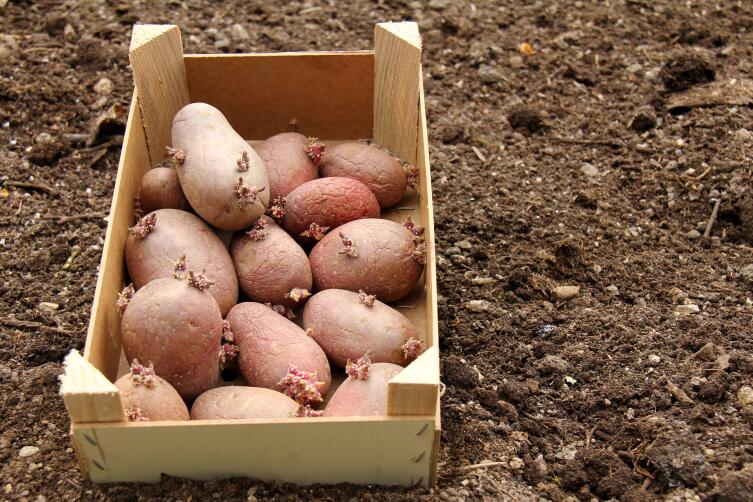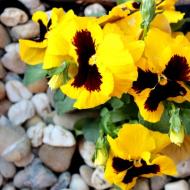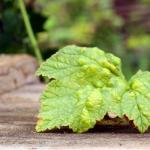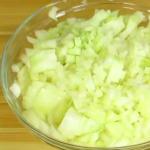
How to save the potato crop?
This disease is called late blight. First of all, those plantations die from it, where potatoes are planted too densely and neighboring bushes touch each other. Spores fell on one leaf, and dew, rain, wind, fog will transfer them to a neighboring potato bush and further ...
For those who grow potatoes with their own hands, an urgent question arises: how to save the harvest? And you need to save him, and immediately. Since it is during budding and the beginning of flowering on the lower leaves of plants that you can see the first dark brown spots of irregular shape - this is late blight.
en.wikipedia.org
This disease appeared on the territory of Russia in the middle of the 19th century, it is caused by a pest fungus that affects leaves, stems, flowers and tubers of root crops. When there are long and cold rains, a white fungal coating forms on the lower leaves. Infected leaves turn black, dry out and rot. In a few days late blight can cover huge areas. As a result, the yield decreases, the tubers do not gain normal mass, since the plants are deprived of a healthy ground part.
Asking how to help? Worst of all, there are no 100% effective medicines for late blight. The success of the fight depends on the first timely preventive spraying of potato tops with contact preparations (fungicides). These chemicals do not cure, but cover the plants with a thin film and thereby prevent the spread of the disease to the entire crop. It is advisable to carry out the first spraying during budding and flowering, the second - 10-14 days after the first, and if necessary, process it a third time. 
Photo: vale, PressFoto.ru
Among them, one percent Bordeaux liquid (100 g of copper sulfate and 100 g of lime per 10 liters of water) is considered an effective and less toxic agent. The validity of all drugs depends on weather conditions: if it rains, then the effect of fungicides weakens. It must be remembered that the last treatment with fungicides can be carried out no later than twenty days before harvesting, and Bordeaux liquid - at least fifteen.
Late blight affects not only tops, but also tubers. With disease-affected plants, rain washes away the spores of the fungus, which also fall on the root crop. Leaving the dug out potato seed tubers lying on the field for a long time, next year we will have another outbreak of late blight. To prevent this from happening, it is important to observe and crop rotation, and 5-7 days before harvesting, you need to mow the tops and remove them from the garden as soon as possible. And in no case do not lay the affected stems in the compost. 
Photo: Zoonar/joerg mikus mailtojmarcor. de, PressFoto.ru
In the fight against the insidious fungus, preventive measures will also help - light germination tubers before planting, timely hilling, weeding and loosening the soil. Germination contributes to the manifestation of late blight spots, and they give out diseased tubers. And timely planted potatoes of early varieties will finish the growing season earlier, which means they are less at risk of damage. And so that the soil warms up sooner and the potatoes give early shoots, it is recommended to cover the planted area with a mulching film. And do not try to plant tomato seedlings next to potatoes, it can cause infection.
Potatoes already dug out of the ground, ripened in a site with late blight, also need careful attention. It is placed in temporary storage for 3-4 weeks, and then sort And culled- the injured and the affected are separated. To protect potatoes from this scourge, it is recommended to grow varieties that are relatively resistant to late blight, which need fewer treatments. 
Photo: YayMicro/BDSPN, PressFoto.ru
It is better to spray plants in the morning or in the evening, when there is no plentiful dew and wind. It is also worth paying attention to the likelihood of precipitation over the next six hours, because the washout of chemicals reduces the effectiveness of protective measures. And don't forget to take your own safety precautions.
You can try to treat the plants folk methods. One of the most effective is garlic tincture, which is prepared as follows: 30 g of cloves are crushed, poured into 10 liters of water, stirred, insisted for a day, filtered. Spray in the evening so that drops do not drip from the leaves and stems. It is advisable to repeat the event four to five times during the summer every 10-15 days.
And also, having worked hard on your backyard and growing a wonderful crop, you will not only increase your family budget, but also improve your shape - get rid of excess weight and get a seductive tan, of course, if you don’t forget to expose your tummy to the sun’s rays.
















